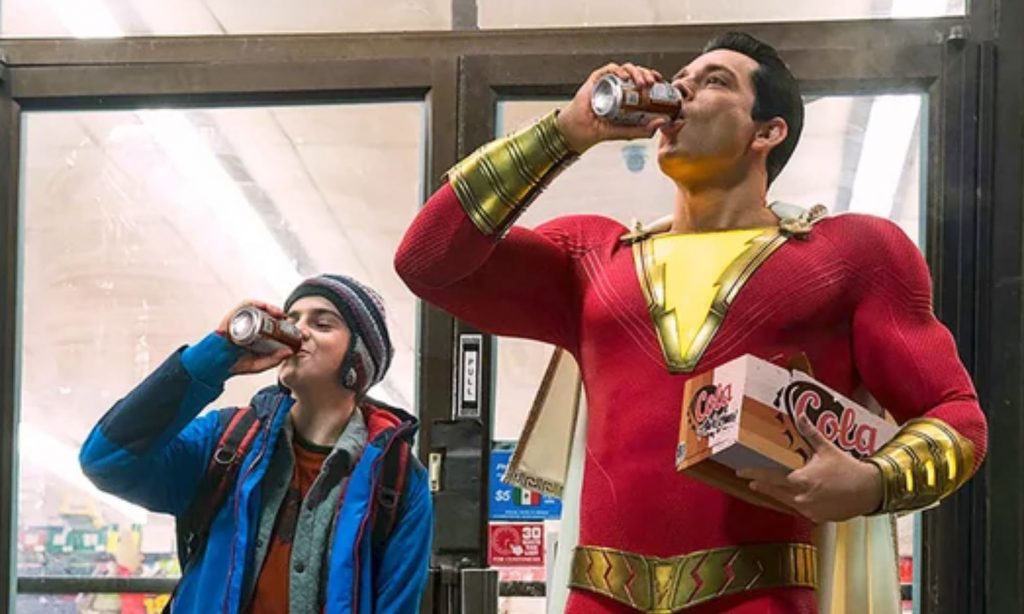Shazam!
by George Wolf
To paraphrase a classic segment from the old Letterman show: Can a guy in a supersuit get into a strip club?
Easily, which is pretty exciting for the teenage boy inside the super man inside the suit. And it’s just one example of the irreverent vibe Shazam! rides to bring home one of the most fun origin stories in recent memory.
The teenage boy is Billy Batson (Asher Angel), who’s just been placed in the latest of a string of foster homes. Just as he’s getting to know his foster family, including the superhero-crazed Freddy (Jack Dylan Grazer from IT, impressive again), Billy is chosen to replace the aging Wizard Shazam (Djimon Hounsou) as protector of the Realms, bringing a youthful energy that will ensure the Seven Deadly Sin-Monsters cannot assume Earthly forms.
The super-villainous Dr. Thaddeus Silva (Mark Strong, gloriously slimy) does not approve, and vows to defeat the new Shazam (Zachary Levi) and assume all his powers.
So it’s on!
But first, Billy and Freddy have to find out just what superpowers are brought on by saying that magic word, which sets up a series of amusing tests and is the springboard for getting to know this grown up superboy while he mulls over possible super names.
“Thundercrack?” “No! That sounds like a butt thing.”
If you’re thinking Big (and the film acknowledges that you are with a cute homage), you’re right on. Writer Henry Gayden (Earth to Echo) fills the script with action, humor, heart and spunk, while director David F. Sandberg (Lights Out) keeps things lively and engaging with plenty of impressive visual pop.
The entire cast is wonderfully diverse and consistently winning, and a few corny moments aside, makes the feels on friendship, family and responsibility land nearly as flush as the winking riffs on superhero tropes.
There really isn’t much Shazam! doesn’t deliver (okay, maybe it delivers a slightly bloated running time that includes two post-credits stingers), and as fast as you can say the magic word, DC has the best film in its universe since Bale was the Bat.









